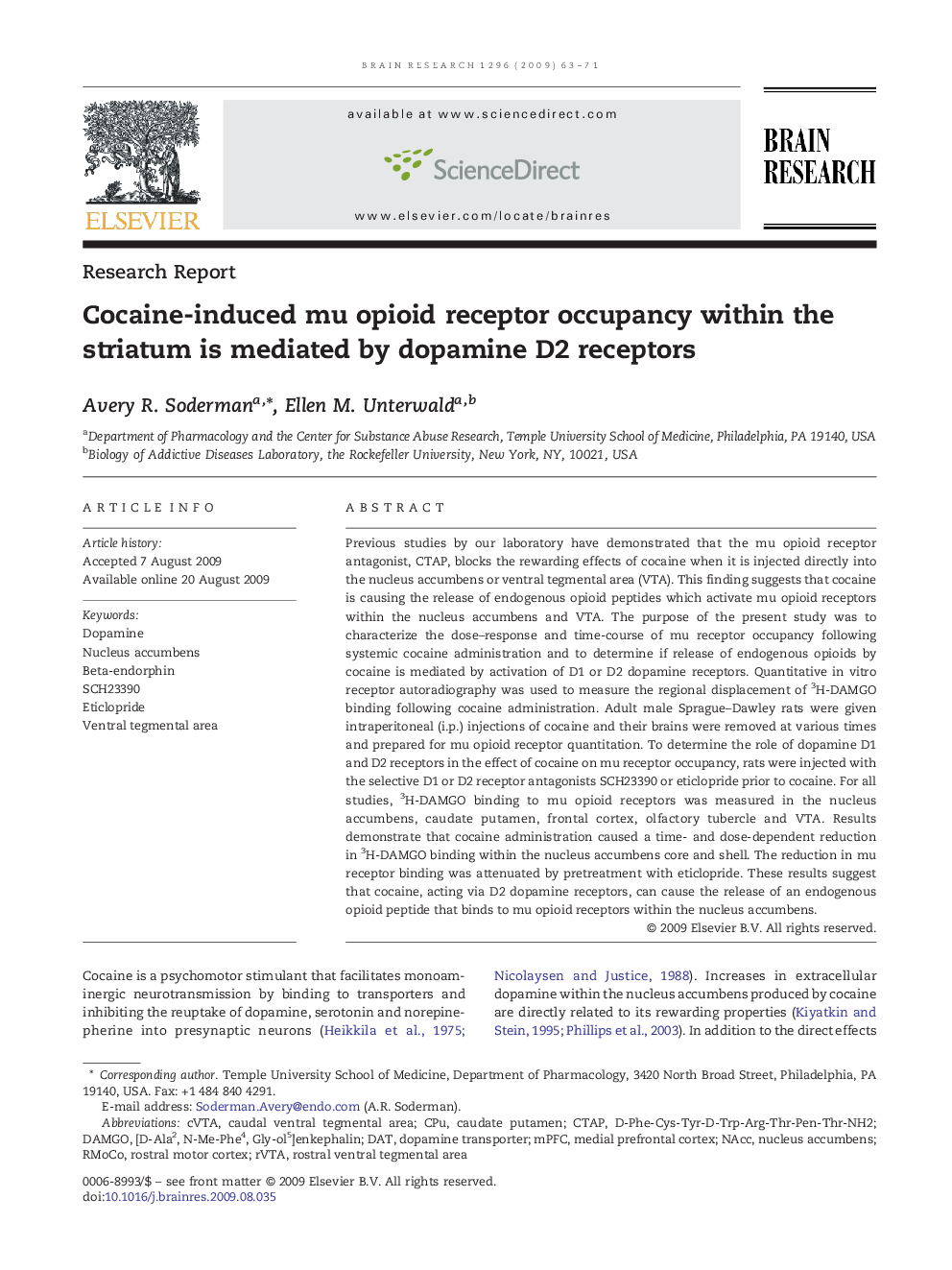| Article ID | Journal | Published Year | Pages | File Type |
|---|---|---|---|---|
| 4327862 | Brain Research | 2009 | 9 Pages |
Previous studies by our laboratory have demonstrated that the mu opioid receptor antagonist, CTAP, blocks the rewarding effects of cocaine when it is injected directly into the nucleus accumbens or ventral tegmental area (VTA). This finding suggests that cocaine is causing the release of endogenous opioid peptides which activate mu opioid receptors within the nucleus accumbens and VTA. The purpose of the present study was to characterize the dose–response and time-course of mu receptor occupancy following systemic cocaine administration and to determine if release of endogenous opioids by cocaine is mediated by activation of D1 or D2 dopamine receptors. Quantitative in vitro receptor autoradiography was used to measure the regional displacement of 3H-DAMGO binding following cocaine administration. Adult male Sprague–Dawley rats were given intraperitoneal (i.p.) injections of cocaine and their brains were removed at various times and prepared for mu opioid receptor quantitation. To determine the role of dopamine D1 and D2 receptors in the effect of cocaine on mu receptor occupancy, rats were injected with the selective D1 or D2 receptor antagonists SCH23390 or eticlopride prior to cocaine. For all studies, 3H-DAMGO binding to mu opioid receptors was measured in the nucleus accumbens, caudate putamen, frontal cortex, olfactory tubercle and VTA. Results demonstrate that cocaine administration caused a time- and dose-dependent reduction in 3H-DAMGO binding within the nucleus accumbens core and shell. The reduction in mu receptor binding was attenuated by pretreatment with eticlopride. These results suggest that cocaine, acting via D2 dopamine receptors, can cause the release of an endogenous opioid peptide that binds to mu opioid receptors within the nucleus accumbens.
